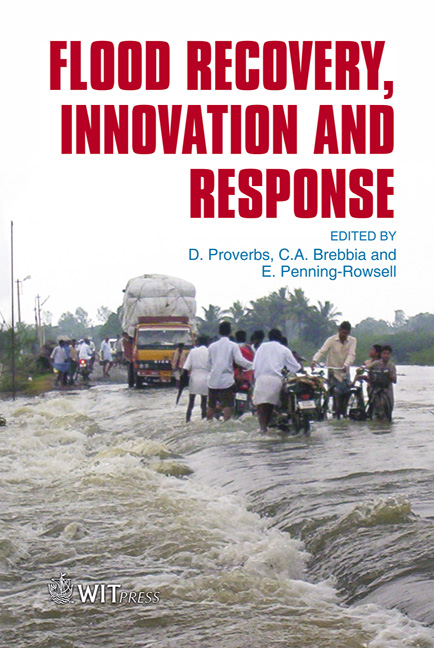From Flood Risk To Indirect Flood Impact: Evaluation Of Street Network Performance For Effective Management, Response And Repair
Price
Free (open access)
Transaction
Volume
118
Pages
10
Page Range
335 - 344
Published
2008
Size
1,199 kb
Paper DOI
10.2495/FRIAR080321
Copyright
WIT Press
Author(s)
J. Gil & P. Steinbach
Abstract
Current flood risk assessment and decision support tools, the UK Planning Policy Statement 25 and the UK Environment Agency (EA) flood maps, focus on the areas directly affected by flooding; however they do not address the indirect consequences of flooding on the existing street network. Research has been done in transport network reliability and resilience to disasters but little application exists to the floods scenario. In this paper we introduce a methodology developed at Space Syntax Limited to analyse and visualise the wider impact of flooding on the urban street network, measuring its performance in order to respond to the situation more effectively. Starting from a hypothetical scenario of floods in London affecting the areas within the highest risk flood Zone 3 as defined by the EA, we use a spatial model of London up to the M25 circular motorway and run network analysis algorithms before and after the flooding. Using a GIS we quantify the extent to which flooding affects the global structure of the city and the spatial accessibility of town centres. The analysis also provides indicators of traffic level distributions to evaluate the performance of the strategic transport network revealing a dependency on the M25 in the flooded scenario for longer trips across London, suggesting congestion levels beyond its capacity. With this work we demonstrate that space syntax network analysis provides objective indicators to demonstrate the indirect impacts of flooding on urban street networks which can be used by relevant authorities to support a future vision and their investment decisions concerning preventative strategies, disaster management and repair. Keywords: climate change, flooding, urban street networks, spatial analysis, space syntax, GIS, mapping, impact assessment, scenario testing, adaptation strategy.
Keywords
climate change, flooding, urban street networks, spatial analysis, space syntax, GIS, mapping, impact assessment, scenario testing, adaptation strategy.





